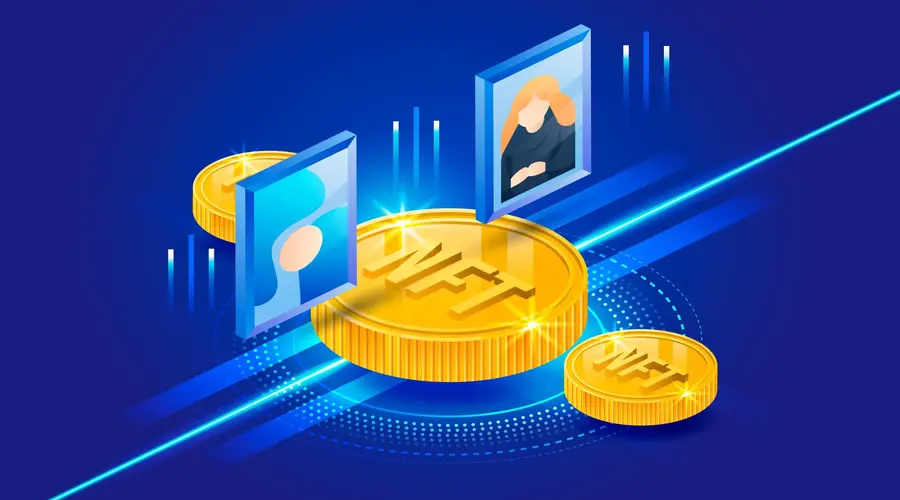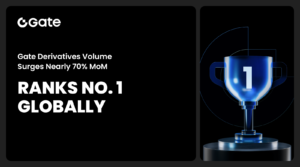
The Challenges of Consensus Mechanisms in Cross-Chain NFTs
In recent years, the emergence of Non-Fungible Tokens (NFTs) has revolutionized the digital art and collectibles market. NFTs enable unique digital assets to be bought, sold, and traded securely on blockchain networks. However, as the popularity of NFTs continues to grow, the need for interoperability between different blockchain networks has become apparent. This has led to the development of cross-chain NFTs, which allow NFTs to be transferred seamlessly between different blockchain ecosystems. One of the critical aspects of cross-chain NFTs is the consensus mechanism used to validate transactions. In this article, we will explore the challenges associated with consensus mechanisms in cross-chain NFTs and discuss potential solutions.
What are Consensus Mechanisms?
Consensus mechanisms are the protocols used to achieve agreement among network participants in blockchain networks. They ensure that all participants have a shared view of the network’s state and validate the transactions being added to the blockchain. In traditional blockchain networks, such as Bitcoin and Ethereum, Proof of Work (PoW) and Proof of Stake (PoS) are the most common consensus mechanisms.
Consensus mechanisms are fundamental protocols employed in blockchain networks to achieve agreement and validate transactions among network participants. These mechanisms ensure that all nodes within the network have a shared and consistent view of the network’s state, enabling trustless and decentralized transactions.
In a blockchain, consensus is crucial for maintaining the integrity and security of the distributed ledger. Traditional consensus mechanisms, such as Proof of Work (PoW) and Proof of Stake (PoS), are widely used in popular blockchain networks like Bitcoin and Ethereum.
In a PoW consensus mechanism, participants, known as miners, compete to solve complex mathematical puzzles to validate transactions and add new blocks to the blockchain. The miner who solves the puzzle first is rewarded with newly minted tokens. This mechanism is resource-intensive and requires significant computational power.
In contrast, PoS consensus mechanisms assign block validation rights to participants based on the number of tokens they hold and are willing to “stake” as collateral. Validators are chosen randomly to validate transactions, reducing the energy consumption associated with PoW.
Other consensus mechanisms, such as Delegated Proof of Stake (DPoS) and Practical Byzantine Fault Tolerance (PBFT), introduce variations in the block validation process to optimize for scalability, speed, and energy efficiency.
Consensus mechanisms play a vital role in ensuring the security, immutability, and consensus of transactions in blockchain networks. By establishing agreement among participants without relying on a central authority, consensus mechanisms enable trust and enable the decentralized nature of blockchain technology.
Consensus Mechanisms in Single-Chain NFTs
In single-chain NFTs, where NFTs are created, bought, and sold within a single blockchain network, the consensus mechanism is relatively straightforward. The underlying blockchain’s consensus mechanism, such as PoW or PoS, is used to validate the transactions and secure the network. This ensures that the ownership and authenticity of NFTs are preserved.
The Need for Cross-Chain NFTs
As the NFT market expands, artists, collectors, and enthusiasts are increasingly seeking ways to interact with NFTs across different blockchain networks. Cross-chain NFTs allow NFTs to be transferred between different blockchains, unlocking new possibilities and creating a more interconnected ecosystem. However, achieving consensus in cross-chain transactions presents several challenges.
The need for cross-chain NFTs (Non-Fungible Tokens) arises from several factors that drive the demand for interoperability and seamless transfer of digital assets across different blockchain networks. The following points outline the need for cross-chain NFTs:
- Market Fragmentation: The NFT market is expanding rapidly, with various blockchain networks hosting their own NFT ecosystems. This fragmentation creates barriers for artists, collectors, and users who wish to interact with NFTs across different networks.
- Expanded Market Opportunities: Cross-chain NFTs unlock new market opportunities by allowing artists and creators to reach a broader audience across multiple blockchain networks. This wider exposure increases visibility, accessibility, and potential sales for NFT creators.
- Asset Portability: Cross-chain NFTs enable seamless transfer of digital assets between different blockchains. This portability allows collectors and users to move their NFTs from one network to another without restrictions, giving them greater flexibility and control over their assets.
- Interconnected Ecosystems: Cross-chain NFTs foster a more interconnected and collaborative ecosystem where artists, collectors, and users can engage with each other across various blockchain networks. This interconnectedness drives innovation, collaboration, and the development of new experiences within the NFT space.
- Diverse Blockchain Features: Different blockchain networks offer unique features and capabilities. By enabling cross-chain NFTs, users can leverage the strengths of different networks, such as scalability, transaction speed, or specific smart contract functionalities, to enhance their NFT experience.
- Reduced Dependency on a Single Network: Relying solely on a single blockchain network for NFT transactions poses risks such as network congestion, high fees, or security vulnerabilities. Cross-chain NFTs provide a decentralized approach, reducing dependence on any single network and enhancing the resilience and robustness of the ecosystem.
- Increased Liquidity: Cross-chain NFTs facilitate liquidity by allowing NFTs to be traded and exchanged on multiple platforms and decentralized exchanges across different blockchain networks. This increased liquidity enhances the market dynamics and accessibility for NFT investors and traders.
In summary, cross-chain NFTs address the challenges posed by market fragmentation and enable seamless asset transfer, expanded market opportunities, interconnected ecosystems, and increased liquidity. By bridging different blockchain networks, cross-chain NFTs pave the way for a more vibrant and accessible NFT ecosystem that benefits artists, collectors, and users alike.

Challenges of Consensus Mechanisms in Cross-Chain NFTs
- Scalability: Coordinating transactions between multiple blockchain networks can lead to scalability issues. As transaction volume increases, the consensus process may become slower and less efficient, resulting in delays and reduced user experience.
- Security: Maintaining security in cross-chain NFT transactions is crucial. Different blockchain networks may have varying security protocols, making it challenging to ensure the integrity and immutability of NFT transfers. Robust security measures are necessary to protect the value and authenticity of NFTs.
- Interoperability: Achieving interoperability between different blockchain networks is a significant challenge. Each network may have its own data structures and smart contract languages, making seamless NFT transfers between them difficult. Standardization and compatibility protocols are needed to enable smooth cross-chain transactions.
- Governance: Cross-chain NFTs involve multiple blockchain networks, each with its own governance model. Coordinating decision-making processes and achieving consensus on network upgrades or changes can be complex. Effective governance mechanisms that address the needs of all participating networks are essential for successful cross-chain NFT operation.
- Energy Efficiency: Many consensus mechanisms, such as Proof of Work (PoW), consume substantial amounts of energy. In the context of cross-chain NFTs, where multiple chains are involved, energy consumption can be significant. Exploring energy-efficient consensus mechanisms that minimize environmental impact while maintaining network security is a pressing challenge.
Addressing these challenges is crucial for the development and widespread adoption of cross-chain NFTs. Solutions such as sidechains and state channels, atomic swaps, interoperability protocols, and layer 2 solutions offer promising approaches to overcome these hurdles. By finding innovative solutions, the cross-chain NFT ecosystem can thrive, offering new opportunities for artists, collectors, and enthusiasts in the digital art and collectibles market.
Potential Solutions
To address the challenges associated with consensus mechanisms in cross-chain NFTs, several potential solutions have been proposed:
Sidechains and State Channels
Sidechains and state channels enable off-chain transactions that reduce the burden on the main blockchain. By processing transactions off-chain and settling them on the main chain periodically, scalability can be improved, and transaction costs can be reduced.
Atomic Swaps
Atomic swaps allow for the direct exchange of NFTs between different blockchain networks without the need for intermediaries. This decentralized approach ensures secure and trustless cross-chain transactions.
Interoperability Protocols
Interoperability protocols, such as Polkadot and Cosmos, aim to bridge different blockchain networks, enabling seamless communication and asset transfers between them. These protocols provide a framework for interoperability and facilitate cross-chain NFT transactions.
Layer 2 Solutions
Layer 2 solutions, like Ethereum’s Optimistic Rollups and ZK-Rollups, aim to scale blockchain networks by processing transactions off-chain and settling them on the main chain. These solutions offer increased scalability and reduced transaction fees while maintaining the security and decentralization of the underlying blockchain.
Conclusion
Cross-chain NFTs present exciting opportunities for artists, collectors, and enthusiasts to explore new frontiers in the digital art and collectibles market. However, the challenges associated with consensus mechanisms in cross-chain NFTs must be addressed for the ecosystem to reach its full potential. Scalability, security, interoperability, governance, and energy efficiency are crucial aspects that require innovative solutions. By overcoming these challenges, cross-chain NFTs can become a powerful and interconnected ecosystem that empowers creators and collectors worldwide.
FAQs
1. What is a consensus mechanism?
A consensus mechanism is a protocol used in blockchain networks to achieve agreement among participants and validate transactions.
2. Why is scalability important in cross-chain NFTs?
Scalability is crucial in cross-chain NFTs to ensure fast and efficient transaction processing, especially when multiple blockchain networks are involved.
3. How can interoperability be achieved between different blockchain networks?
Interoperability can be achieved through the use of interoperability protocols that bridge different blockchain networks and enable seamless communication and asset transfers.
4. Are there any energy-efficient consensus mechanisms for cross-chain NFTs?
Efforts are being made to explore energy-efficient consensus mechanisms that minimize the environmental impact while maintaining network security in cross-chain NFTs.
5. Can governance challenges be overcome in cross-chain NFTs?
Addressing governance challenges in cross-chain NFTs requires the development of effective governance mechanisms that consider the needs and interests of all participating blockchain networks.
I have worked in the cryptocurrency industry for over 5 years and have written numerous articles on the subject. I am well-versed in all aspects of cryptocurrencies and blockchain technology, and am an expert in the field.








